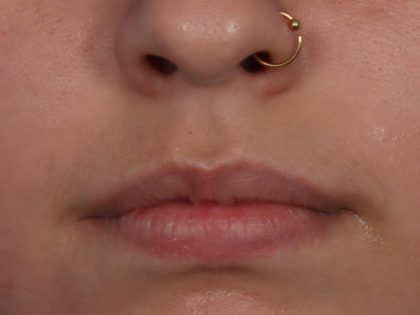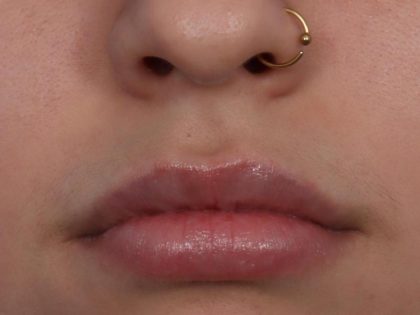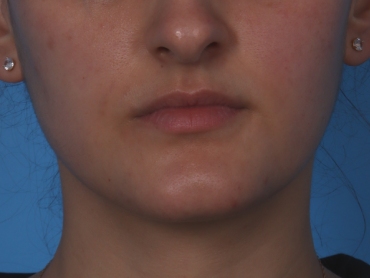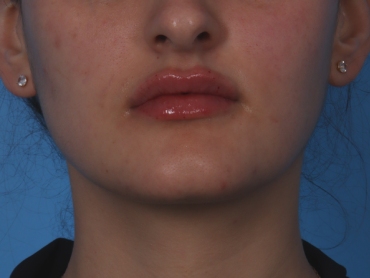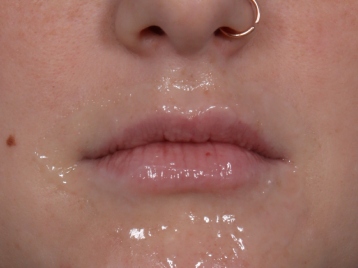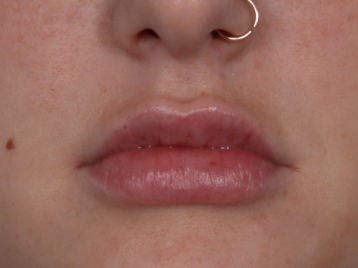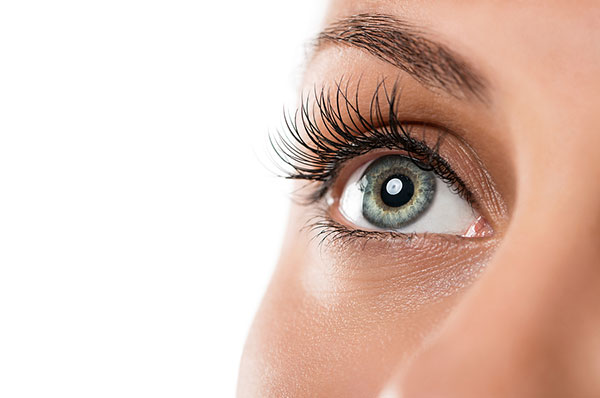
Latisse is an FDA-approved prescription treatment that has been clinically proven to enhance eyelash growth, thickness, and darkness. Long, full lashes have always been a symbol of beauty and youth. However, not everyone is blessed with naturally long lashes. Fortunately, there are solutions available that can help you achieve the lashes of your dreams.
The process is simple – Latisse is applied daily to the base of the upper eyelashes with a sterile applicator. Over time, patients can expect to see significant improvement in lash length, fullness, and color.
Joseph Michaels MD is a board-certified plastic surgeon who offers Latisse treatments at his Rockville, Maryland and Fairfax, VA locations. During your consultation, Dr. Michaels will assess your individual needs and determine if Latisse is right for you. To book your appointment, call your nearest location or fill out a form for more information.
Rockville, MD: (301) 468-5991
Fairfax, VA: (703) 957-8610
Read Dr. Michaels’ blog for more information about our services.
Contents
Before and After Photos
How Does Latisse Work?
Latisse is designed to enhance lash growth. It works by increasing the length of the growth phase of eyelash hair follicles. This allows lashes to grow longer and thicker over time. The active ingredient in Latisse is bimatoprost, which was originally used as a medication to treat glaucoma. Researchers soon discovered that one of the side effects of using bimatoprost was increased lash growth. After extensive testing and research, Latisse was developed as a cosmetic treatment for those looking to enhance the appearance of their lashes. (1)
How Easy is it to Use Latisse?
Using Latisse is simple. It comes in the form of a liquid that is applied to the base of your upper lashes on the lid margin. (2) It’s important to not apply Latisse to the lower lashes or to use more than the recommended amount, as this can lead to unwanted hair growth in other areas.
Benefits
With Latisse, you can expect the following benefits:
- Longer and thicker lashes
- Enhanced appearance without the need for mascara or false lashes
- Reduced risk of eye infections compared to using fake lashes
- Safe and effective results with FDA approval
- A simple and painless application process, easily incorporated into your daily routine
Dr. Michaels will guide you through the process with a personalized approach, ensuring that the treatment is tailored to meet your unique needs and goals. Give your eyes the attention they deserve with Latisse at Joseph Michaels MD. Contact us today to schedule a consultation.
Candidates
Latisse is a prescription medication used to enhance eyelash growth for individuals experiencing insufficient or inadequate eyelashes. The ideal candidates for Latisse are those who desire longer, fuller lashes and are in good overall health. It is important to note that Latisse should not be used if you have an eye infection, allergy, or have experienced adverse reactions to the medication in the past. With proper use, Latisse can provide natural-looking, lush lashes that can enhance your overall appearance.
Personal Consultation
During your consultation, Dr. Michaels will review your medical history and discuss your cosmetic goals. He will also examine your eyelashes to determine if Latisse is the right option for you. Latisse is FDA-approved and clinically proven to increase lash growth, but it may not be suitable for all patients. Dr. Michaels will help determine if you are a good candidate and explain how the treatment works.
If you are ready to enhance your natural beauty with Latisse, contact our office today at (301) 468-5991 to schedule your personal consultation. We also offer virtual consultations for those who are unable to visit our office in person. Our friendly staff will be happy to answer any questions you may have and assist you in scheduling your appointment.
Preparation
- Disclose any medical conditions or medications you are taking to ensure safe use of the product
- Understand that Latisse takes time to work and results may not be immediately noticeable.
- Be prepared to consistently apply Latisse as directed for maximum effectiveness.
- Have realistic expectations for the length and thickness of your lashes based on your individual genetics and biology.
By taking these steps, you can ensure that you are prepared for your Latisse treatment and can achieve the best possible results for longer, fuller lashes.
Applying Latisse
The treatment process is simple – Latisse is applied nightly to the base of the upper eyelashes using a sterile applicator. Over time, patients will begin to see their lashes gradually grow longer, thicker, and darker. In as little as 8 weeks, you can achieve the full results of the treatment. It’s important to note that while Latisse is a highly effective treatment for longer lashes, it does require consistent application to maintain results. If you stop using Latisse, your lashes will eventually return to their previous state.
If you’re interested in learning more about Latisse, Dr. Michaels can provide a consultation to determine if this treatment is right for you. He’ll review your medical history and discuss your aesthetic goals to ensure that you receive the best possible care.
Getting the Best Results
After applying Latisse, it’s important not to rub your eyes or get water in them for at least 15 minutes. You may experience some itching, redness or irritation, but these side effects are usually mild and temporary. If you stop using Latisse, your lashes will gradually return to their previous state, so it’s important to use it consistently as directed by Dr. Michaels.
With regular use, you should start seeing results within a few weeks, with full results appearing around 16 weeks. The length, thickness, and darkness of your lashes will increase, giving you a more dramatic and youthful appearance. As with any medication, it’s important to discuss any concerns or questions you have with Dr. Michaels. He will carefully monitor your progress and provide personalized guidance to help you achieve optimal results.
Corresponding & Complementary Procedures
Eyelid Lift (Blepharoplasty)
An eyelid lift, or blepharoplasty, is a surgical procedure that removes excess skin and fat from the upper and lower eyelids, resulting in a more youthful and rested appearance. The procedure can be performed on its own or in conjunction with other cosmetic procedures, such as a facelift or brow lift, to achieve a more youthful and refreshed appearance.
Botox
Botox is a non-surgical cosmetic treatment that helps reduce the appearance of wrinkles and fine lines on the face. It is a purified form of botulinum toxin that blocks the nerve signals to the muscles, which prevents them from contracting and causing wrinkles. Botox is a popular choice for patients looking to improve the appearance of crow’s feet, forehead lines, and frown lines.
Lip Fillers
Lip enhancement with fillers is an effective, semi-permanent way to achieve more prominent lips. Lip fillers are a non-surgical cosmetic procedure that enhances the appearance of thin or asymmetrical lips by adding volume and definition. Treatment with hyaluronic acid fillers can help to restore your youthful appearance and give you a more confident smile.
Cost of Latisse in Rockville, MD
At Joseph Michaels MD, we offer Latisse as a solution for those who want to enhance the length and thickness of their eyelashes. The cost of Latisse treatment will depend on several factors including the amount of product needed and the number of treatments required to achieve your desired results. During your consultation with Dr. Michaels, he will assess your individual needs and provide you with a personalized treatment plan that includes the cost of treatment.
Call or fill out our online form to schedule a consultation and learn more about the cost of Latisse treatment at our Rockville or Fairfax locations.
Rockville, MD: (301) 468-5991
Fairfax, VA: (703) 957-8610
FAQ
What is Latisse?
Latisse is a prescription medication that is used to enhance the growth of eyelashes. It contains bimatoprost, which helps stimulate the growth phase of eyelash hair follicles.
How does Latisse work?
Latisse works by extending the growth phase of the eyelash hair cycle. This allows for longer and thicker lashes over time.
Is Latisse safe?
Yes, Latisse has been clinically tested and approved by the FDA for safe use in enhancing eyelash growth. However, as with any medication, there may be potential side effects. It is important to discuss these risks with your doctor before starting treatment.
How do I apply Latisse?
Latisse is applied once a day to the base of clean, dry upper eyelashes using a sterile applicator brush. It is important to follow the instructions provided by your doctor to ensure proper application and avoid contamination.
When Will I See Results From Latisse?
Most patients see results from Latisse within 8-10 weeks of daily use. However, individual results may vary.
Can I use Latisse on my lower lashes?
No, Latisse is only recommended for use on the upper lashes. Applying it to lower lashes can potentially cause unwanted hair growth or other adverse effects.
What happens if I stop using Latisse?
If you stop using Latisse, your eyelashes will gradually return to their previous state over time. It is important to continue using Latisse as directed by your doctor to maintain the desired results.
Are there any risks associated with Latisse?
As with any medication, there may be potential risks or side effects associated with Latisse. These can include eye irritation, redness, itching, or darkening of the skin around the eyes. It is important to discuss these risks with your doctor before starting treatment.
References
- Huang AS, Meyer JJ. Bimatoprost Ophthalmic Solution. PubMed. Published 2023. Accessed April 11, 2023. https://www.ncbi.nlm.nih.gov/books/NBK576421/#:~:text=Bimatoprost%20ophthalmic%20solution%20is%20an
- Bitton E, Courey C, Giancola P, Diaconu V, Wise J, Wittich W. Effects of LATISSE (bimatoprost 0.03 per cent topical solution) on the ocular surface. Clinical and Experimental Optometry. 2017;100(6):583-589. doi:https://doi.org/10.1111/cxo.12507







